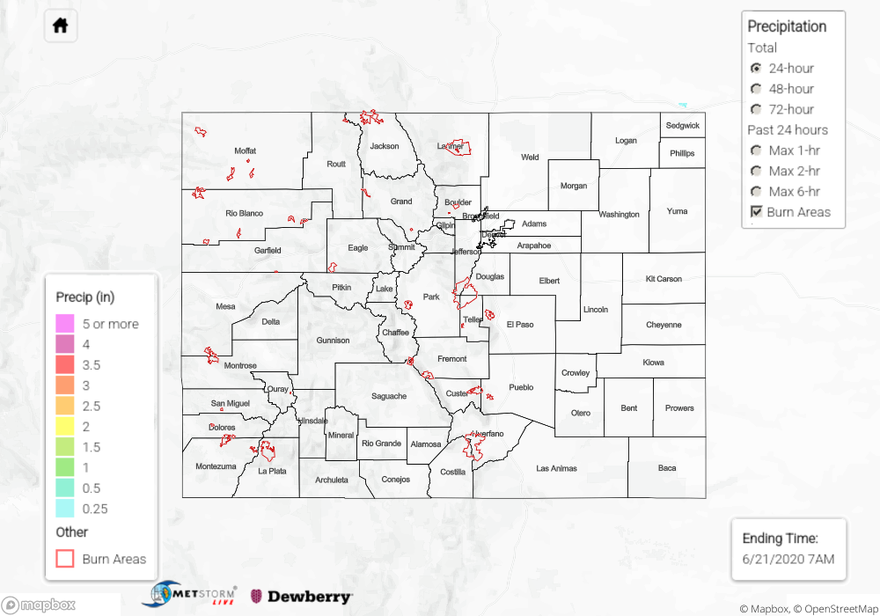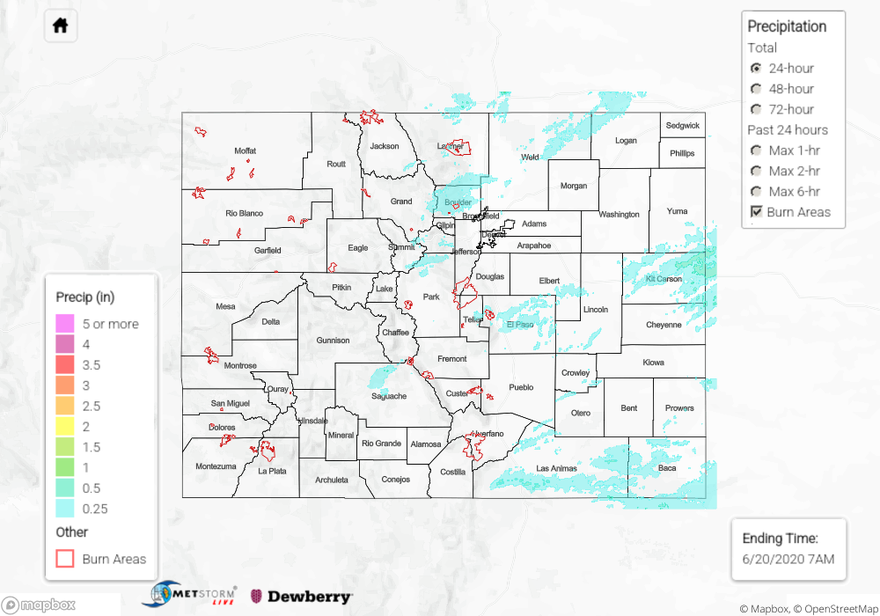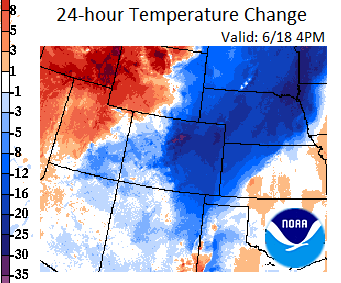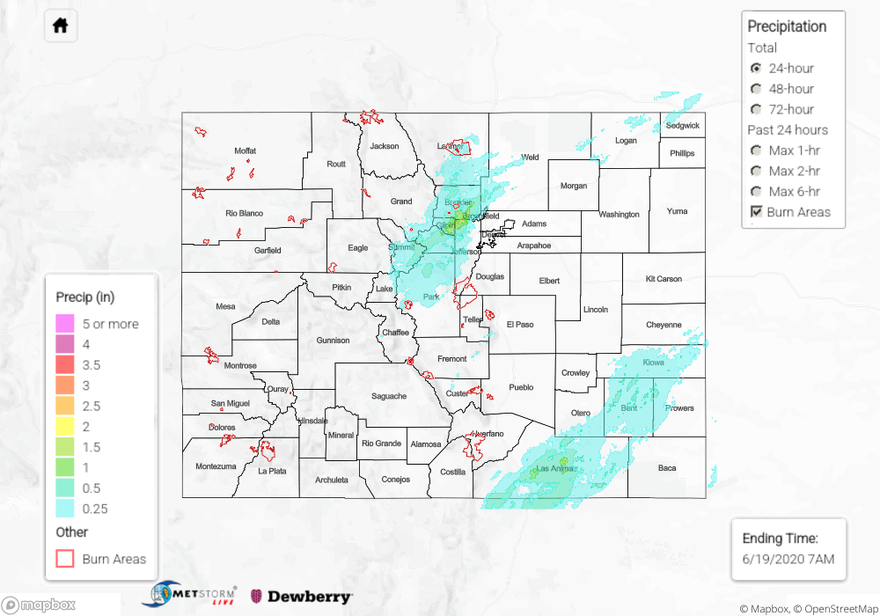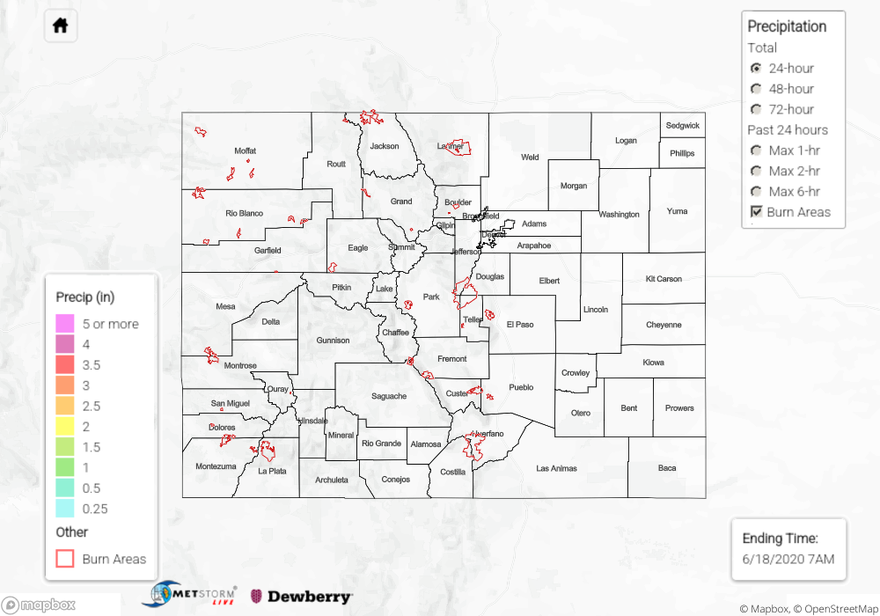Issue Date: Sunday, June 21st, 2020
Issue Time: 9:00 AM MDT
Summary:
Colorado spent the first day of Summer in Colorado basking in plenty of sunshine, which is great for those of us who were able to spend some time outdoors, but a little tough for those of us who are supposed to write about rainfall. All jokes aside, it was a pleasant day statewide, with mid- and high-level moisture only able to muster up increasing clouds during the evening and overnight hours.
Flooding was not reported on Friday. For rainfall estimates in your area, check out our State Precipitation Map below.
Click Here For Map Overview
